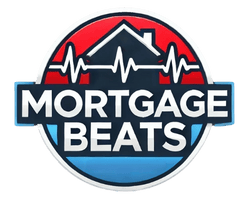Introduction
Buying a home is one of the most exciting milestones in life, but it also comes with its fair share of financial responsibilities. While most homebuyers are prepared for the big-ticket costs—such as the down payment and monthly mortgage payments—there are numerous hidden costs that can sneak up on you. These costs can add up quickly, affecting your budget and long-term financial plans.
Understanding these hidden costs before you make an offer on a property is essential. Not only will it help you avoid financial surprises down the road, but it will also give you a clearer picture of what homeownership truly entails. Whether you’re a first-time buyer or someone who has gone through the process before, it’s crucial to have a full understanding of the total costs involved.
At NorCal Real Estate & Financial Service, we guide homebuyers through every aspect of the process, ensuring that they are well-informed about not just the upfront costs, but also the ongoing expenses that come with owning a home. In this article, we’ll cover the most common hidden costs of buying a home, so you can prepare accordingly.
The Down Payment – Beyond the 20% Rule
The down payment is one of the first costs you’ll need to consider when buying a home, and while many people think of the standard 20% down payment, this is not always the case. Depending on the type of mortgage you choose and your financial situation, the down payment can vary significantly. In some cases, you might be able to secure a home loan with a much lower down payment, such as 3% for FHA loans or zero down for VA loans. However, it’s important to understand that lower down payments often come with higher monthly payments or the need for private mortgage insurance (PMI).
In addition to the down payment, some lenders may charge additional origination fees or processing fees, which can further increase your upfront costs. It’s also worth noting that the 20% down payment rule is often recommended because it helps you avoid PMI, which is an additional monthly cost. While a 20% down payment can give you better loan terms, NorCal Real Estate & Financial Service helps homebuyers explore various loan options and find the best financing solution based on their personal financial situation.
As you plan your home purchase, remember that the down payment isn’t the only upfront cost you’ll need to budget for. By working with an expert mortgage broker, you can ensure you’re making an informed decision and understanding all your available options.
Closing Costs and Their Impact
Closing costs are another often-overlooked expense that can add up quickly. These costs can range from 2% to 5% of the home’s purchase price, depending on the complexity of the transaction, the location of the property, and the type of loan you’re securing. These fees cover a wide range of services, including **title insurance, escrow fees, loan origination fees, and recording fees.
While it’s easy to focus on the price of the home and the down payment, closing costs can be a significant burden if you haven’t accounted for them in your budget. For example, if you’re buying a $300,000 home, your closing costs could be anywhere from $6,000 to $15,000. It’s important to be prepared for these expenses ahead of time, as failing to do so could delay the closing process or leave you scrambling for funds.
Some homebuyers are surprised to learn that they can negotiate certain closing costs, such as asking the seller to contribute toward closing fees or finding lenders with lower origination fees. At NorCal Real Estate & Financial Service, we provide our clients with an accurate estimate of closing costs well in advance and work with them to explore strategies for reducing these expenses.
Home Inspection and Appraisal Fees
Before finalizing your mortgage, most lenders will require a home inspection and an appraisal to determine the condition and value of the property. While these may seem like standard steps, they come with additional costs that can add up quickly.
A home inspection typically costs between $300 to $500 and is essential to identify any potential issues with the property. From structural problems to electrical issues, a thorough inspection ensures you aren’t left with unexpected repair costs after moving in. If the inspection uncovers significant issues, you may be able to renegotiate the terms of your offer or request that the seller pay for repairs.
An appraisal, on the other hand, is required by the lender to ensure the home is worth the amount you are borrowing. The appraisal fee can range from $300 to $700, depending on the size and location of the property. While these costs may feel like additional burdens, they are necessary to ensure that you are making a sound investment. At NorCal Real Estate & Financial Service, we help our clients understand these costs upfront, so there are no surprises during the homebuying process.
Property Taxes – An Ongoing Expense
Property taxes are an often-overlooked ongoing expense of homeownership. These taxes are assessed by local governments based on the value of your property and can vary greatly depending on your location. In some areas, property taxes can be a **substantial part of your monthly homeownership costs**.
When purchasing a home, your lender may require you to escrow property taxes, meaning you’ll pay a portion of your property taxes along with your mortgage payment each month. While this system helps ensure your taxes are paid on time, it also means that your total monthly payment will be higher than just your mortgage. In some cases, your property taxes could increase after you purchase your home, which could impact your long-term affordability.
It’s important to research property tax rates in your area and factor this into your home budget. Some regions have higher property taxes than others, which could significantly affect your overall homeownership costs. NorCal Real Estate & Financial Service assists clients in understanding the full scope of homeownership expenses, including property taxes, so that there are no surprises down the line.
Homeowners Insurance: A Required but Overlooked Expense
Homeowners insurance is another essential cost that comes with owning a home. Lenders typically require borrowers to have homeowners insurance in place to protect both the homeowner and the lender in case of damage to the property. While this may seem like a straightforward expense, the cost of homeowners insurance can vary depending on several factors, such as location, home value, and coverage limits.
For example, homes in areas prone to natural disasters, such as floods or earthquakes, may require additional coverage, which can significantly increase the cost of your premiums. Even if your area isn’t considered high-risk, homeowners insurance is still a significant cost to consider in your home budget. On average, homeowners insurance costs between $600 to $1,200 per year, but this can vary widely based on the factors mentioned earlier.
When shopping for homeowners insurance, it’s important to compare different providers to find the best coverage at the most affordable price. Working with NorCal Real Estate & Financial Service ensures you understand this essential expense and can factor it into your overall affordability calculations.
Private Mortgage Insurance (PMI) – When It’s Required
If your down payment is less than 20%, most lenders will require private mortgage insurance (PMI) to protect them in case you default on the loan. PMI is an additional cost that is added to your monthly mortgage payment and can range from 0.3% to 1.5% of the original loan amount per year.
While PMI is not required for all loans, it can add a significant expense to your monthly payments if your down payment is below the 20% threshold. Fortunately, PMI is not permanent. Once you have paid off enough of your mortgage and your equity reaches 20%, you may be able to remove PMI from your loan payments, but this varies depending on the lender and your loan type.
At NorCal Real Estate & Financial Service, we help clients determine whether PMI will be required and explore options for avoiding or removing it down the line. We work with you to find the best mortgage solution based on your financial situation and ensure you understand all costs involved, including PMI.
Homeowner Association (HOA) Fees
If you’re buying a home in a community with a Homeowners Association (HOA), you may be required to pay monthly or annual **HOA fees**. These fees go toward maintaining common areas, landscaping, and community amenities, such as a swimming pool or fitness center. While these fees vary by location and community, they can range from **$100 to $500 per month** or more, depending on the size and amenities of the community.
HOA fees are in addition to your mortgage payment and can add a significant cost to your monthly homeownership expenses. Some HOA communities also have special assessments for major repairs or improvements, which can increase the fees in any given year. It’s important to factor in these fees when considering your total homeownership budget.
At NorCal Real Estate & Financial Service, we ensure that you’re aware of all HOA fees and any potential future assessments before committing to a property. This helps you make an informed decision and avoid any surprises down the road.
Maintenance and Repair Costs After You Move In
Once you’ve purchased your home, you may find that **ongoing maintenance and repair costs** can be significant. Unlike renting, where the landlord is typically responsible for repairs, as a homeowner, you are responsible for maintaining the property. From **routine maintenance** like lawn care and HVAC servicing to more significant repairs such as a leaky roof or plumbing issues, these costs can quickly add up.
It’s recommended to set aside a portion of your monthly income for home maintenance and repairs. A good rule of thumb is to budget 1% to 2% of your home’s purchase price annually for maintenance and repairs. This means that for a $300,000 home, you should plan for $3,000 to $6,000 in annual maintenance costs.
Properly budgeting for maintenance helps ensure you are financially prepared for any unexpected repairs and allows you to keep your home in good condition over the years. NorCal Real Estate & Financial Service works with homebuyers to help them understand all aspects of homeownership, including budgeting for repairs and maintenance.
How NorCal Real Estate & Financial Service Helps You Navigate Hidden Costs
At NorCal Real Estate & Financial Service, we understand that buying a home is a major financial commitment, and we work closely with you to help you navigate both the visible and hidden costs of homeownership. Our team provides expert advice on down payments, closing costs, and other potential expenses, ensuring that you’re fully prepared for the financial responsibilities of owning a home.
We also help you understand the long-term costs, such as maintenance, property taxes, and insurance, so you can plan your budget accordingly. By working with NorCal Real Estate & Financial Service, you gain access to our vast experience and knowledge, ensuring a smooth and informed homebuying process.
Conclusion
While the excitement of buying a home is undeniable, it’s important to be prepared for the hidden costs that come with homeownership. From down payments and closing costs to ongoing maintenance and unexpected repairs, understanding these costs ensures you can budget effectively and avoid surprises. By working with NorCal Real Estate & Financial Service, you’ll receive expert guidance every step of the way, helping you make informed decisions about your home purchase.
If you’re ready to begin your homebuying journey, contact NorCal Real Estate & Financial Service today. Our team will help you navigate the process and ensure you’re fully prepared for the costs involved, from down payments to closing and beyond.
Ready To Get The Best Financial Advise, Email us at: Chris@mortgagebeats.com



